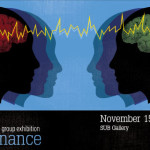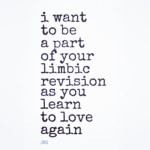 I went through three bad therapists before I found my current one, and for the first two years, I kept asking him the same question: “You’re just a hired gun, right? ‘What’s love got to do with it?’ What good can this really do me, since it’s just business?”
I went through three bad therapists before I found my current one, and for the first two years, I kept asking him the same question: “You’re just a hired gun, right? ‘What’s love got to do with it?’ What good can this really do me, since it’s just business?”
Then one day I was reading Thich Nhat Hanh’s “The Heart of the Buddha’s Teaching” (photo above by PlumVillage.org). On page 5, Nhat Hanh writes this of his youth in Vietnam: “I grew up in a time of war. There was destruction all around – children, adults, values, a whole country. As a young person, I suffered a lot. Once the door of awareness has been opened, you cannot close it. The wounds of war in me are still not healed. There are nights I lie awake and embrace my people, my country, and the whole planet with mindful breathing…”
I dissolved in tears, that such a leader of men could live with this terrible pain.
Then he says: “Please don’t run away from your suffering. Embrace it, and cherish it. Go to the Buddha, sit with him, and show him your pain. He will look at you with eyes of loving kindness, compassion, and mindfulness, and show you ways to embrace your suffering and look deeply into it. With this understanding and compassion, you will be able to heal the wounds in your heart…”
Just as suddenly I flashed on a picture of my therapist, grey beard and all. Whoa, he’s a Christian therapist, and I’m (or was) a nice Jewish girl from Long Island — so “trust me,” as we say in New York, Dr. R. was the furthest thing from my mind when I picked up Nhat Hahn’s book.
But now it hits me like a ton of bricks:
“Oh: Buddha!,” I said, speaking mentally to Dr. R. “This is how you look at me, this is how you create deep changes in my soul…” And then I was really bawling and calling Dr. R’s tape to leave a message reading him Nhat Hanh’s passage — saying, more or less, “OK, now I get it! This is real attachment, it’s the real deal! Hey, Buddha…”
[ Find a good therapist: http://attachmentdisorderhealing.com/resources/attachment-therapists-directory/ ]
Emotional Investment
 In the years since, we’ve discussed it, and lived it, and he says it — but now I knew: Dr. R. is 100% invested in me.
In the years since, we’ve discussed it, and lived it, and he says it — but now I knew: Dr. R. is 100% invested in me.
Not the way he’s invested in 40lks or in paying his mortgage; he could make a living an easier way. Instead, he chooses to invest his emotions and attachment into his clients as a dear friend would. He chooses to lay his soul out under me like a warm limbic carpet of deep emotional support, as Sir Walter Raleigh did his cloak for Queen Elizabeth.
That takes courage and ginormous simply plain human compassion and sheer humanity.
Recently I read these words by Sir Richard Bowlby, son of the founder of attachment theory, addressing therapy for adopted children — but it goes for anyone who needs deep therapy, and it made my whole body sob:
“The… intervention …involves clinicians taping into their own empathic capacities to help children feel supported to such a degree that direct connections can be forged between the reality of children’s traumatic experiences and the parents and/or clinicians being able to tolerate their pain and so regulate the child’s distress down to a manageable level. The recognition that another person can truly understand and tolerate their pain can be a major contribution to the client’s therapeutic outcome. ” http://www.beyondconsequences.com/bowlby.html
If you consider the level of pain that I get into with developmental trauma since the sperm hit the egg, Dr. R. is tolerating hell on wheels – and that is because he did not shrink (ooooops, bad pun) from the only way to gain that skill: he has looked deeply within himself in years past, and he has done his own trauma healing as deeply as he’s asking me to do.
[This post originated when I saw a comment on an article by therapist Dr. Laura K. Kerr, in which the commentator felt that therapy can’t be more than a business transaction; original at: http://www.socialjusticesolutions.org/2015/04/01/trauma-informed-psychotherapy-puts-body-love-back-mental-healthcare/#comment-125547]
“General Theory” on Therapy and Love:
 The psychiatric text “General Theory of Love” shows that human beings depends for survival on our mammalian “limbic brain,” and that as we grow, our minds and souls are healthy and feel well, or don’t, depending literally upon love. [FN1] (Click on graphic to open; from Boise State University News.)
The psychiatric text “General Theory of Love” shows that human beings depends for survival on our mammalian “limbic brain,” and that as we grow, our minds and souls are healthy and feel well, or don’t, depending literally upon love. [FN1] (Click on graphic to open; from Boise State University News.)
It also documents that good therapy is nothing but love. The problem, they point out, is that too many therapists can’t manage that kind of good therapy.
Our caregivers create our infant brain via “limbic resonance,” they report, the resonating of an adult’s limbic brain with an infant’s limbic brain — via attuned deep eye contact. “By looking into his eyes and becoming attuned to his inner state, a mother can intuit her baby’s feelings and needs,” they write. “The regular application of that knowledge changes a child’s emotional makeup.”
When the mother attunes to the infant with deep love, the infant learns that love is safe, forms a secure attachment, feels a sense of belonging and a sense of peace. “Attachment penetrates to the neural core of what it means to be a human being” they write, and thus the book’s title. It’s all about love and nothing but love. More details: http://attachmentdisorderhealing.com/love-theory-2/
The book’s second half demonstrates that psychotherapy works when it does, only due to love — love precisely of the above deep nature. And therapy doesn’t work when limbic resonance and love don’t flower. It’s got nothing to do with a charity date or even such foolishness as “re-parenting.”
It’s just plain and simple deep human compassion, eye to eye. For that reason, “psychotherapy is physiology,” they state.
“When a person starts therapy… he is stepping into a somatic state of relatedness, ” they report. “Evolution has sculpted mammals… (to) become attuned to on another’s evocative signals and alter the structure of one another’s nervous systems. Psychotherapy’s transformative power comes from engaging and directing these ancient mechanisms. Therapy is a living embodiment of limbic processes as corporeal as digestion or respiration.
“Speech is a fancy neocortical skill, but therapy belongs to the older realm of the emotional mind, the limbic brain.
“Love is not only an end for therapy; it is also the means whereby every end is reached. (p.168-9) The first part of emotional healing is being limbically known – having someone with a keen ear [a good therapist-kb] catch your melodic essence.” (p.170)
Unfortunately there are a lot of incompetent therapists hiding behind their desks and diplomas, refusing to really relate. “Some therapists recoil from the pivotal power of relatedness. They have been told to deliver insight — a job description evocative of estate planning or financial consulting, the calm dispensation of tidy data packets from the other side of an imposing desk,” writes “General Theory.”
“A therapist who fears dependence will tell his patient, sometimes openly, that the urge to rely is pathologic. In doing so he denigrates a cardinal tool. A parent who rejects a child’s desire to depend raises a fragile person. Those children, grown to adulthood, are frequently among those who come for help.
“If patient and therapist are to proceed together down a curative path, they must allow limbic regulation and its companion moon, dependence, to make the revolutionary magic.
“Many therapists believe that reliance fosters a detrimental dependency. Instead, they say, patients should be directed to “do it for themselves” – as if they possess everything but the wit to throw that switch and get on with their lives.
Limbic Revision
 “But people do not learn emotional modulation as they do geometry or the names of state capitals. They absorb the skill from living in the presence of an adept external modulator, and they learn it implicitly,” the book states. ” Knowledge leaps the gap from one mind to the other, but the learner does not experience the transferred information as an explicit strategy. Instead, a spontaneous capacity germinates and becomes a natural part of the self, like knowing how to ride a bike or tie one’s shoes.” (p.171) (graphic by N.Bam on Tumblr)
“But people do not learn emotional modulation as they do geometry or the names of state capitals. They absorb the skill from living in the presence of an adept external modulator, and they learn it implicitly,” the book states. ” Knowledge leaps the gap from one mind to the other, but the learner does not experience the transferred information as an explicit strategy. Instead, a spontaneous capacity germinates and becomes a natural part of the self, like knowing how to ride a bike or tie one’s shoes.” (p.171) (graphic by N.Bam on Tumblr)
“People who need regulation often leave therapy sessions feeling calmer, stronger, safer, more able to handle the world. … The longer a patient depends, the more his stability swells, expanding infinitesimally with ever session as length is added to a woven cloth with each pass of the shuttle, each contraction of the loom. And after he weaves enough of it, the day comes when the patient will unfurl his independence like a pair of spread wings. Free at last, he catches a wind and rides into other lands.” (p.172)
“Knowing someone is the first goal of therapy… Therapy’s last and most ambitious aim is revising the neural code that directs an emotional life. (176) Psychotherapy changes people because one mammal can restructure the limbic brain of another… (p.177)
“Describing good relatedness to someone, no matter how precisely or how often, does not inscribe it into the neural networks that inspire love. Self-help books are like car repair manuals: you can read them all day, but doing so doesn’t fix a thing.
“Working on a car means rolling up your sleeves and getting under the hood, and you have to be willing to get dirt on your hands and grease beneath your fingernails. Overhauling emotional knowledge is no spectator sport; it demands the messy experience of yanking and tinkering that comes from a limbic bond. If someone’s relationship today bear a troubled imprint, they do so because an influential relationship left its mark on a child’s mind.
“When a limbic connection has established a neural pattern, it takes a limbic connection to revise it. (p.177)”
“The person of the therapist is the converting catalyst, not his credo, not his location in the room, not his exquisitely chosen words or silences… The dispensable trappings of dogma may determine what a therapist thinks he is doing, what he talks about when he talks about therapy, but the agent of change is who he is. (187)
“The brevity of mini (psycho)therapies is another efficient forestaller of healing. The neocortex rapidly masters didactic information, but the limbic brain takes mountains of repetition. No one expects to play the flute in six lessons or to become fluent in Italian in ten. ” (p.189) “The skill of becoming and remaining attuned to another’s emotional rhythms requires a solid investment of years.” (p.205)
“The limbic connectedness of a working psychotherapy requires uncommon courage. A patient asks to surrender the life he knows and to enter and emotional world he has never seen; he offers himself up to be changed in ways he can’t possibly envision. As his assurance of successful transmutation he has only the gossamer of faith…
“Only human love keeps this from being the act of two madmen. (p.190)”
———————————
Kathy’s news blogs expand on her book “DON’T TRY THIS AT HOME: The Silent Epidemic of Attachment Disorder—How I accidentally regressed myself back to infancy and healed it all.” Watch for the continuing series each Friday, as she explores her journey of recovery by learning the hard way about Attachment Disorder in adults, adult Attachment Theory, and the Adult Attachment Interview.
Footnotes
FN1 Lewis, Thomas, MD; Amini, Fari, MD; Lannon, Richard, MD; “A General Theory of Love”, Random House, New York, 2000.
Dr. Lannon interviews at: www.paulagordon.com/shows/lannon/
Preface excerpts at: www.nytimes.com/books/first/l/lewis-love.html
Dr. Lewis specifically on therapy: www.goodreads.com/author/quotes/1503539.Thomas_Lewis
![]()



Does your therapist allow out-of-session contact? My therapist doesn’t. It can be hard sometimes when I’m in crisis and it’s a while until the next session. Reading your article, I realized that I do view it as a business transaction, largely because of this issue. I wonder if my needing extra contact has been what’s causing my troubles with therapists?
I feel we should choose therapists based on how empathic they are to us. I didn’t at first. I chose my first 2 therapists because they were so calm and reasonable, when I felt hysterical and in pain; I wanted to be like them. But I now see that they showed little or no empathy for me; instead, they too demanded I be like them! “Dr. Rita,” the second one, eventually proved to be so un-empathic she nearly killed me.
With my current wonderful attachment-based psychotherapist, I knew immediately: he cared about me, and over 5 years that feeling only has gotten stronger. I’d keep interviewing and firing until I find a therapist who shows they care, first.
An emphatic therapist doesn’t forbid simple voice mails.
If we leave too many or too hysterical, they don’t have to listen. If we leave a reasonable number, a good therapist should start listening after they get to know us–if they see that we are really serious about this.
My therapist had the standard start-up policy of allowing 3-minute voice mails when I felt bad, and returning calls when he had time. I hurt bad and almost killed myself numerous times — but I was sane enough to limit my calls to 2-3 a month.
I learned to leave voice mails on friends’ phones instead, then go meet them to share my heart – it worked.
Therapists are people, too. No human being should or can in fact trust any other person without getting to know them for months and watching what their hands and feet do. Actions build trust; words do not; and trust must be earned.
I’d estimate 70% of people like you and me end up as flakes – tramatees run like hell from this healing because “gotta feel the pain to heal the pain” and it feels like Living Death. I lose friends every day over this. If you were a therapist, you’d by now have been dropped and disappointed dozens or hundreds of times by flakes. That hurts therapists–who are in it for the human contact. There are better ways to make money!
Therapists need to limit calls at first to maintain their own sanity so they can help us. If they returned every hysterical call, they’d soon be dead. After a year my Dr. saw how serious I was and started calling back more and talking longer. After 3 years, now I make 20 minute tapes and email to him; he seriously listens and calls back. He’s committed to me.
This is not a game; this is walking through Hell in order to win back one’s life. It’s life or death.
A 5☆☆☆☆☆ evaluation of successful connection of 2♡♡!!
How awesome it’s Thay who helped you see! I liked this on Facebook but if I could, I would triple like it. Thay is the only one that has been able to reach me… Loving kindness is hard to accept when one has never learned, experienced or felt the concept of love!
Did you hear that Thay (nickname for Thich Nhat Hanh) just spoke a few words, the first since his stroke? He said “So Good!”
8th Sept 2015: Thay is receiving a full rehabilitation program in San Francisco. Although recovery remains very challenging, he has been able to say a few words http://plumvillage.org/about/thich-nhat-hanh/thich-nhat-hanhs-health/
And: Thay’s at UCSF Medical Center, where MDs Thomas Lewis and Richard Lannon are, authors of “General Theory of Love” : http://attachmentdisorderhealing.com/mammal-love/
Thank you for sharing this. This does a lot to show why it’s more than a hired gun, which I admit is how I usually feel. I trust only people who attach voluntarily and without payment. To me, the money part just changes it. I don’t mean it makes it unimportant or not necessary at times. It just doesn’t feel like love or choice, completely and between equals. It’s a service and some do it better than others but it’s not a give and take exchange. That, to me, is the ultimate healing. I hope for and aspire to a handful of those deep relationships of mutual witnessing,honoring and being there. Like… I guess.. the idealized or traditional idea of healthy family.